1.What is a 7.4V Li-Polymer Battery? How does it differ from other types of batteries?
A 7.4V Li-Polymer battery is a rechargeable battery typically composed of lithium-ion technology and polymer electrolyte. It has a rated voltage of 7.4 volts and is suitable for various electronic devices and applications.
Here are the differences between 7.4V Li-Polymer batteries and other types of batteries:
Chemical Composition: 7.4V Li-Polymer batteries utilize lithium-ion technology and polymer electrolyte, while other types of batteries may use different chemical compositions such as lithium-ion, nickel-cadmium, lead-acid, etc.
Voltage: The rated voltage of a 7.4V Li-Polymer battery is 7.4 volts, whereas other types of batteries may have different rated voltages, such as 3.7 volts (single-cell lithium-ion battery), 1.2 volts (nickel-cadmium battery), etc.
Energy Density: Due to the use of polymer electrolyte and lithium-ion technology, 7.4V Li-Polymer batteries typically have higher energy density, providing longer working time and lighter-weight design.
Safety: Compared to some other types of batteries, 7.4V Li-Polymer batteries exhibit better safety performance. Polymer electrolytes are more stable than liquid electrolytes, reducing the risk of battery thermal runaway.
Charging Characteristics: 7.4V Li-Polymer batteries have good charging and discharging characteristics, enabling fast charging and discharging, with lower self-discharge rates. In contrast, some other types of batteries may have lower charging efficiency or require longer charging times.
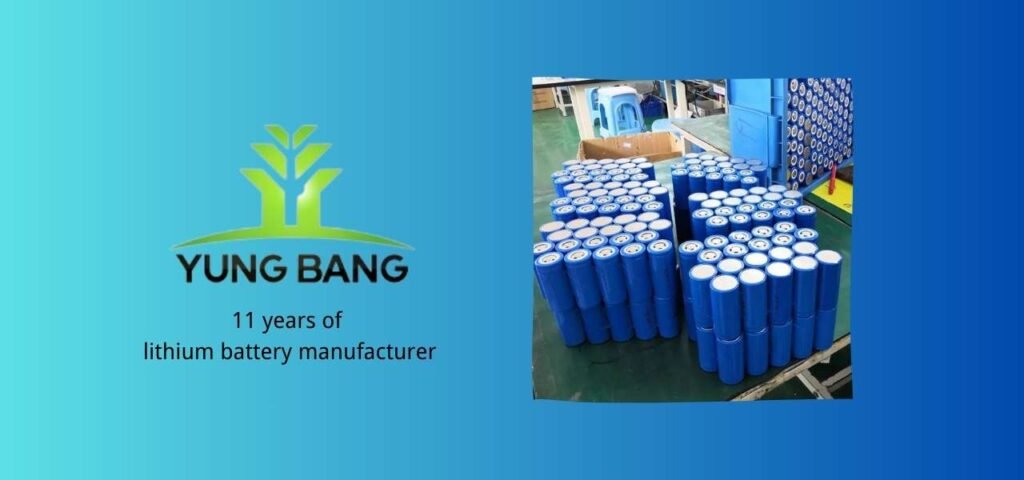
2.What are the chemical components of a 7.4V Li-Polymer Battery? How do they affect battery performance?
The chemical components of a 7.4V Li-Polymer battery mainly include positive electrode materials, negative electrode materials, polymer electrolyte, separator, and other components. Here’s a detailed explanation of these components and their impact on battery performance:
Positive Electrode Material: Positive electrode materials are typically lithium-ion compounds such as lithium cobalt oxide (LiCoO2), lithium nickel manganese cobalt oxide (LiNiMnCoO2), lithium iron phosphate (LiFePO4), etc. Positive electrode materials are responsible for inserting and releasing lithium ions during charge and discharge, directly affecting battery energy density and cycle life.
Negative Electrode Material: Negative electrode materials are typically carbon (graphite) or silicon materials, responsible for receiving and releasing lithium ions. Suitable negative electrode materials can improve battery cycle stability and charge/discharge efficiency.
Polymer Electrolyte: 7.4V Li-Polymer batteries use polymer electrolytes as the ion-conducting medium, replacing traditional liquid electrolytes. Polymer electrolytes typically have good chemical stability and mechanical properties, effectively preventing internal short circuits and thermal runaway, thereby improving battery safety.
Separator: The separator is located between the positive and negative electrodes, preventing direct contact and short circuits while allowing ions to pass through. Separators are usually made of polymer materials with high electrolyte permeability and mechanical strength, ensuring the safe and stable operation of the battery.
These chemical components collectively influence the performance of 7.4V Li-Polymer batteries. For example, selecting appropriate positive and negative electrode materials can improve battery energy density and cycle life; using high-quality polymer electrolytes can enhance battery safety and stability; optimizing separator design can reduce internal short circuits and improve battery cycle stability. Therefore, when designing and manufacturing 7.4V Li-Polymer batteries, the selection and proportioning of these chemical components need to be comprehensively considered to achieve optimized battery performance and safety requirements.
3.Why are 7.4V Li-Polymer batteries commonly used in electronic devices and drone applications?
7.4V Li-Polymer batteries are commonly used in electronic devices and drone applications due to several advantages:
High Energy Density: Li-Polymer batteries have high energy density, providing longer runtimes and more extended power support compared to other battery types. This is crucial for applications like electronic devices and drones that require prolonged usage.
Lightweight Design: Li-Polymer batteries are lighter in weight and smaller in size compared to other battery types, making them suitable for devices like drones that have high demands for weight and volume.
Fast Charging Characteristics: Li-Polymer batteries exhibit good charging characteristics, allowing for rapid charging and low self-discharge rates. This means users can recharge the battery quickly and have it ready for use, improving device availability and efficiency.
Good Safety: Compared to other battery types, Li-Polymer batteries have higher safety performance. The use of polymer electrolytes effectively prevents internal short circuits and thermal runaway, reducing the risk of battery explosions or fires, which is essential for applications requiring high safety levels like electronic devices and drones.
Versatility: Li-Polymer batteries are flexible in design and can be customized and optimized according to different application requirements, making them suitable for various electronic devices and complex applications like drones.
4.What is the internal structure of a 7.4V Li-Polymer battery? How are they designed to provide the required voltage and capacity?
The internal structure of a 7.4V Li-Polymer battery mainly includes positive and negative electrodes, electrolyte, separator, and casing components. Designing 7.4V Li-Polymer batteries to provide the required voltage and capacity typically involves considering the following aspects:
Selection of Positive and Negative Electrode Materials: Choosing suitable positive and negative electrode materials to achieve the desired voltage and capacity. Different combinations of positive and negative electrode materials can produce different voltage and capacity characteristics.
Optimization of Electrolyte Formulation: Optimizing the formulation and composition of the polymer electrolyte to improve the battery’s ion conductivity and chemical stability, thereby achieving higher battery performance and safety.
Separator Performance Requirements: Selecting appropriate separator materials and designs to ensure the separator has good electrolyte permeability and mechanical strength, preventing internal short circuits and safety issues.
Casing Design and Material Selection: Designing the appropriate casing structure and selecting suitable materials to provide sufficient mechanical support and protection while ensuring the battery remains lightweight and compact.
5.What is the working principle of a 7.4V Li-Polymer battery? How do they store and release energy?
The working principle of a 7.4V Li-Polymer battery is based on the movement of lithium ions between the positive and negative electrodes, achieved through the charge and discharge process. Here’s how they work:
Charging Process:
During charging, lithium ions de-intercalate from the positive electrode material and move towards the negative electrode, passing through the electrolyte via the separator.
Meanwhile, the negative electrode material receives and stores these lithium ions, causing the negative electrode to develop a negative charge, while the positive electrode loses corresponding lithium ions and develops a positive charge.
This process increases the battery’s voltage until it reaches the set charging cutoff voltage.
Discharging Process:
During discharging, lithium ions de-intercalate from the negative electrode material and move towards the positive electrode, passing through the electrolyte via the separator.
Meanwhile, the positive electrode material receives and stores these lithium ions, causing the positive electrode to develop a negative charge, while the negative electrode loses corresponding lithium ions and develops a positive charge.
This process decreases the battery’s voltage until it reaches the battery’s discharge cutoff voltage (typically around 3.0V or lower), at which point the battery is depleted of energy and needs to stop discharging.
Energy Storage and Release:
During the charging process, the battery converts electrical energy into chemical energy by inserting lithium ions from the positive electrode into the negative electrode to store energy.
During the discharging process, the battery converts chemical energy back into electrical energy by releasing the lithium ions stored in the negative electrode to provide power supply.
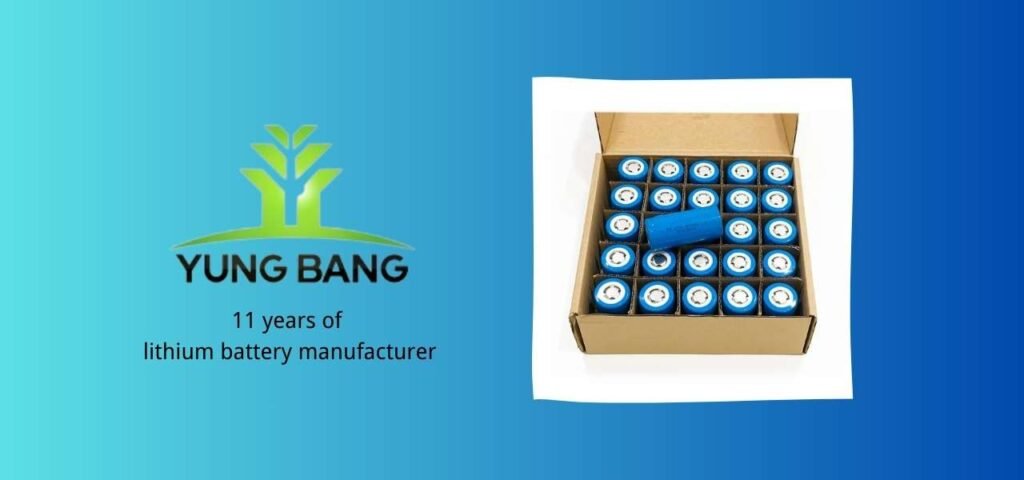
6.How is the capacity of a 7.4V Li-Polymer battery measured? What is mAh (milliampere-hour)? How does it relate to the battery’s runtime?
The capacity of a 7.4V Li-Polymer battery is typically measured in milliampere-hours (mAh). mAh represents the amount of current the battery can deliver within one hour, i.e., the amount of charge released per hour. Specifically, 1mAh means the battery can deliver 1 milliampere of current for 1 hour. Therefore, mAh is an indicator of battery capacity, used to denote the battery’s stored electrical energy.
The battery’s capacity (mAh) is related to its runtime. If the battery’s capacity and the device’s current consumption are known, the battery’s runtime can be calculated using the following formula:
Runtime (hours) = Battery capacity (mAh) / Device current consumption (milliamperes)
For example, if a device consumes 100 milliamperes of current per hour, and the battery’s capacity is 2000mAh, then the battery can power the device for:
2000mAh / 100mA = 20 hours
This means the battery can power the device continuously for 20 hours. Therefore, the larger the battery’s capacity (mAh), the longer the battery can power the device.
7.How does the charging process of a 7.4V Li-Polymer battery work? Do they require special chargers?
The charging process of a 7.4V Li-Polymer battery typically involves several stages and often requires the use of specific types of chargers to charge properly:
Constant Current Charging Stage: During this stage, the charger delivers a constant current to the battery until the battery’s voltage reaches the set charging cutoff voltage (typically 4.2V).
Constant Voltage Charging Stage: Once the battery’s voltage reaches the charging cutoff voltage, the charger maintains a constant voltage output and gradually reduces the output current until the battery’s absorbed current approaches zero.
Maintenance Charging Stage: During this stage, the charger maintains the battery’s voltage near the charging cutoff voltage to ensure the battery is fully charged.
During the charging process, the following points should be noted:
Use of Suitable Charger: To ensure safety and charging effectiveness, a dedicated charger designed for Li-Polymer batteries should be used. These chargers typically have appropriate charging algorithms and safety protection features to control the charging process effectively.
Follow Charging Specifications: During the charging process, strict adherence to the charging specifications and guidelines provided by the charger and battery manufacturers is essential. This includes setting the charging current and voltage, controlling the charging time, etc.
Avoid Overcharging: Overcharging can damage the battery and increase safety risks. Therefore, during the charging process, it is essential to avoid exceeding the battery’s rated charging voltage and to stop charging promptly.
8.How does the discharging process of a 7.4V Li-Polymer battery work? What is their output current like?
The discharging process of a 7.4V Li-Polymer battery involves releasing lithium ions embedded in the positive and negative electrode materials. Here are the basic steps of the discharging process:
Electron Release: At the beginning of discharging, the positive electrode material starts releasing embedded lithium ions, which flow through the circuit to the negative electrode, providing current.
Current Output: The released electrons flow through the circuit, generating current output. The battery’s output current depends on the load in the circuit, as well as the battery’s internal resistance and electrochemical characteristics.
Lithium Ion Movement: Meanwhile, lithium ions move from the positive electrode to the negative electrode through the electrolyte and separator, maintaining the battery’s voltage and providing continuous current output.
Voltage Decrease: As discharging progresses, the concentration of lithium ions inside the battery decreases, leading to a gradual decrease in voltage until it reaches the battery’s discharge cutoff voltage (typically 3.0V or lower), indicating that the battery is depleted of energy and needs to stop discharging.
During the discharging process, the battery’s output current depends on the load in the circuit and the battery’s electrochemical characteristics. A larger load will result in higher output current, while a smaller load will produce lower output current. Additionally, the battery’s design and specifications will affect its maximum output current and duration of output.
9.What does the cycle life of a 7.4V lithium polymer battery mean? How is their lifespan affected by the number of charge-discharge cycles?
The cycle life of a 7.4V lithium polymer battery refers to the number of charge-discharge cycles the battery can complete under certain conditions (typically standard charge-discharge cycle conditions) until its capacity decreases to a certain level or loses a certain amount of performance. Cycle life is usually measured in terms of the number of charge-discharge cycles, with one cycle referring to the process of the battery being fully charged, discharged, and then fully charged again.
The lifespan of lithium polymer batteries is influenced by the number of charge-discharge cycles in the following ways:
Cycle Count vs. Lifespan: Generally, the more cycles a battery undergoes, the shorter its lifespan. Each charge-discharge cycle causes chemical reactions and physical changes in the battery’s materials, gradually leading to a decrease in battery capacity and performance.
Battery Design and Quality: Factors such as battery design, material selection, and manufacturing quality affect cycle life. High-quality batteries typically have longer cycle lives because they use high-quality materials and manufacturing processes that better withstand the degradation caused by cyclic use.
Charge-Discharge Conditions: Factors such as temperature, current, and voltage during charge-discharge processes also affect cycle life. Excessive or inadequate charging currents, high temperatures, etc., can accelerate battery degradation, thus shortening cycle life.
Deep Discharge: Deep discharge (fully depleting the battery) can cause significant damage to the battery and should be avoided as much as possible. For lithium polymer batteries, shallow discharges (not exceeding a certain depth of discharge) can extend cycle life.
10.What does the self-discharge rate of a 7.4V lithium polymer battery mean? Do they change over time?
The self-discharge rate of a 7.4V lithium polymer battery refers to the rate at which the battery’s charge decreases when it is not connected to any load. In other words, it measures how quickly the battery’s charge diminishes when left unused. The self-discharge rate is usually expressed as a percentage per day or per month.
The presence of a self-discharge rate is due to internal chemical reactions and minor defects in the battery’s materials, causing lithium ions to naturally discharge even when not in use. Although the self-discharge rate is relatively slow, batteries left unused for long periods may experience significant charge depletion.
The self-discharge rate typically changes over time. Generally, when batteries are fresh from the factory, their self-discharge rates are low. However, with use and aging, internal chemical reactions in the battery may accelerate, leading to an increase in the self-discharge rate. Additionally, factors such as high temperatures, prolonged storage, improper charging, etc., may also increase the self-discharge rate.
To maximize battery lifespan and maintain performance, it’s recommended to periodically check the battery’s self-discharge rate and take appropriate measures to minimize its impact during storage and use, such as storing at proper temperatures and periodic charging.
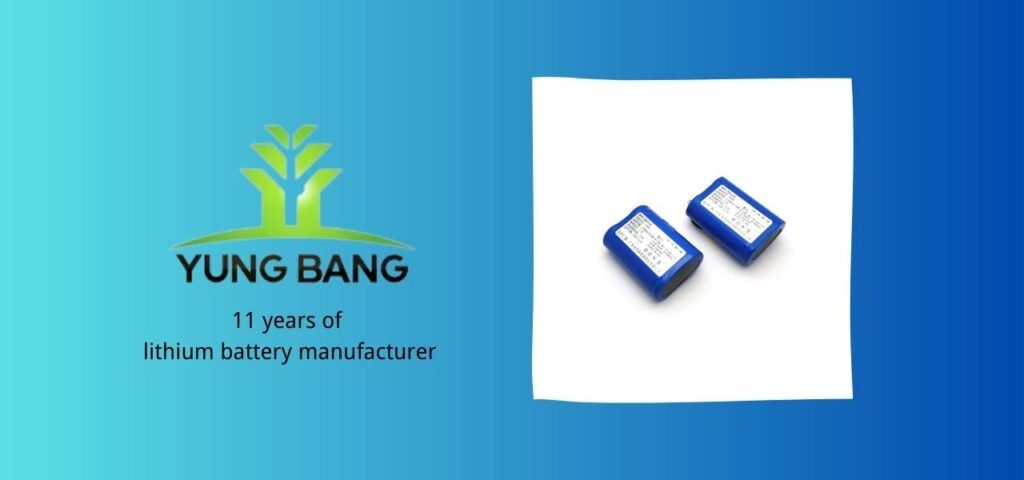
11.What are some common safety issues with 7.4V lithium polymer batteries? How can these issues be avoided?
Common safety issues with 7.4V lithium polymer batteries include:
Overcharging: Charging the battery beyond its rated voltage during the charging process can lead to overcharging, resulting in issues like overheating, leakage, or even explosion.
Overdischarging: Discharging the battery below extremely low voltage levels can lead to overdischarging, damaging the battery and reducing its performance or causing it to fail.
Overheating: Excessive heat generated during charging or discharging processes can lead to thermal runaway, explosion, or fire hazards.
Short Circuits: Direct connection of the battery’s positive and negative terminals or damage to the separator can lead to internal short circuits, potentially resulting in overheating or explosion.
Physical Damage: Physical damage or crushing of the battery casing can lead to electrolyte leakage, internal short circuits, etc.
To avoid these safety issues, the following preventive measures can be taken:
Use Suitable Chargers: Use chargers specifically designed for lithium polymer batteries and strictly adhere to charging specifications and guidelines provided by the charger and battery manufacturers.
Avoid Overcharging and Overdischarging: Do not charge the battery beyond its rated voltage or discharge it below recommended voltage levels to prevent overcharging or overdischarging.
Avoid Overuse: Avoid continuous high-load discharge and cease using the battery before its capacity is fully depleted.
Prevent Short Circuits: Ensure the battery’s connection and storage environment are safe to avoid external short circuits, and use batteries with protective features.
Regularly Check Battery Status: Periodically inspect the battery for physical damage and abnormalities during charging and discharging processes, and promptly address or replace problematic batteries.
Proper Storage: Store batteries in dry, ventilated, and light-proof environments away from high temperatures, humidity, and flammable materials.
12.What is the operating temperature range of a 7.4V lithium polymer battery? How do high and low temperatures affect their performance?
The operating temperature range of a 7.4V lithium polymer battery typically falls between 0°C to 45°C, although specific ranges may vary depending on the manufacturer and model. Within this temperature range, the battery can provide optimal performance and safety. However, temperatures outside this range can adversely affect battery performance:
Effects of High Temperatures:
Increased Self-Discharge Rate: High temperatures can increase the self-discharge rate of the battery, reducing its storage lifespan.
Accelerated Chemical Reactions: High temperatures can accelerate internal chemical reactions in the battery, leading to faster capacity loss and reduced cycle life.
Increased Internal Pressure: High temperatures can increase internal pressure in the battery, increasing the risk of thermal runaway, explosion, or fire hazards.
Effects of Low Temperatures:
Reduced Discharge Capacity: Low temperatures can decrease the battery’s discharge capacity, reducing the operating time of devices.
Increased Internal Resistance: Low temperatures can increase the battery’s internal resistance, reducing its discharge efficiency and the amount of current it can deliver.
Slowed Chemical Reactions: At low temperatures, chemical reaction rates in the battery slow down, reducing the available energy at colder temperatures.
13.What is the environmental impact of 7.4V lithium polymer batteries? Can they be recycled?
The environmental impact of 7.4V lithium polymer batteries primarily includes the following aspects:
Resource Consumption: Battery production consumes significant amounts of resources, including finite mineral resources and energy. This may have negative environmental impacts, such as environmental degradation from mineral extraction and energy consumption.
Waste Management: Disposed lithium polymer batteries can pose pollution and hazards to the environment. Improper disposal may lead to toxic substances and chemicals leaking into the soil and water, affecting ecosystems and human health.
Energy Consumption: The energy consumed during battery production and disposal processes may result in greenhouse gas emissions and contribute to climate change.
Although 7.4V lithium polymer batteries may have some negative environmental impacts, they also have the potential for recycling and reuse. Many materials in batteries, such as metals, plastics, and electrolytes, can be recycled and reused through appropriate processing and recycling processes. Recycling batteries can reduce the demand for raw resources, lower waste disposal costs, and minimize environmental impacts.
To minimize the negative environmental impact of 7.4V lithium polymer batteries, the following measures should be taken:
Responsible Use and Disposal: Extend the battery’s lifespan as much as possible and avoid unnecessary waste. After battery use, it should be sent to specialized recycling facilities for safe disposal and recycling.
Recycling: Support battery recycling efforts and encourage consumers to return used batteries to recycling centers or stores for proper recycling and disposal.
Development of Eco-Friendly Technologies: Continuously promote the development and innovation of eco-friendly technologies to reduce resource consumption and environmental impacts during battery production and disposal processes.
By implementing these measures, the negative environmental impact of 7.4V lithium polymer batteries can be minimized, and resources can be effectively utilized and recycled.
14.What are the advantages and disadvantages of 7.4V lithium polymer batteries compared to other battery types?
7.4V lithium polymer batteries have several advantages and disadvantages compared to other battery types such as nickel-cadmium batteries, lead-acid batteries, etc.:
Advantages:
High Energy Density: Lithium polymer batteries have high energy density, providing larger energy storage capacity compared to nickel-cadmium and lead-acid batteries while being more lightweight and compact.
No Memory Effect: Lithium polymer batteries do not suffer from memory effect, so they do not require frequent full discharge and recharge cycles, making them more convenient to use.
Low Self-Discharge Rate: Compared to other battery types, lithium polymer batteries have a lower self-discharge rate, allowing them to maintain charge for longer periods when not in use.
Fast Charging: Lithium polymer batteries typically have fast charging rates, allowing them to be fully charged in a short amount of time.
Non-Polluting: Lithium polymer batteries do not contain harmful substances such as heavy metals, making them environmentally friendly.
Disadvantages:
High Cost: Manufacturing costs for lithium polymer batteries are higher compared to other battery types, resulting in relatively higher prices.
Limited Temperature Adaptability: The performance of lithium polymer batteries may be affected under extreme temperatures, with reduced discharge capacity in low temperatures and potential safety issues in high temperatures.
Safety Hazards: Although relatively safe, lithium polymer batteries can still pose safety hazards under conditions such as overcharging, overdischarging, or external short circuits, leading to overheating, explosion, etc.
Limited Cycle Life: The cycle life of lithium polymer batteries is typically slightly shorter than that of lead-acid batteries, requiring periodic replacement.
Temperature Constraints: Lithium polymer batteries require operating within suitable temperature ranges during charging and discharging, with high or low temperatures affecting battery performance and safety.
15.What is the level of standardization of 7.4V lithium polymer batteries? Are batteries from different manufacturers compatible with each other?
The standardization level of 7.4V lithium polymer batteries is relatively high, but not as strict as some other types of batteries with international standards. Typically, the standardization of lithium polymer batteries manifests in several aspects:
Battery Size and Appearance: Some common 7.4V lithium polymer batteries have standardized sizes and appearances to facilitate replacement and compatibility in different devices. Batteries with the same size and connection methods are generally interchangeable.
Battery Connectors and Interfaces: In some applications, the battery’s connectors and interfaces may be standardized for compatibility with different devices.
Charger Standards: Some chargers may adopt standard charging voltages and algorithms to accommodate 7.4V lithium polymer batteries from different manufacturers.
However, despite some aspects of standardization, lithium polymer batteries from different manufacturers are not entirely mutually compatible. This may involve differences in the battery’s internal chemical composition, cell design, protection circuits, etc. Therefore, when using 7.4V lithium polymer batteries, it’s best to choose OEM or recommended battery models compatible with the device to ensure optimal performance and safety.
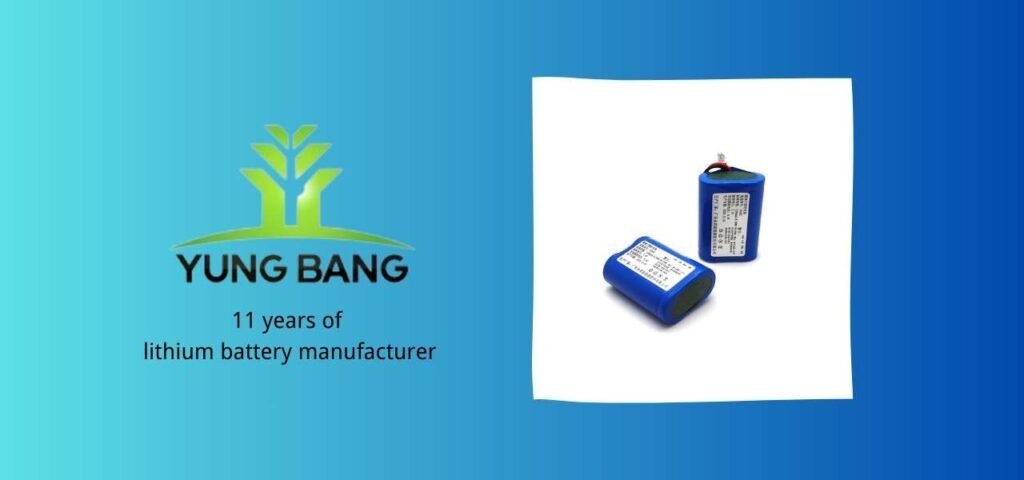
16.What are the applications of 7.4V lithium polymer batteries in different industries? What are some innovative uses?
7.4V lithium polymer batteries are widely used in various industries due to their high energy density, lightweight, and fast charging advantages. Here are some common application areas and innovative uses:
Electronics: Including smartphones, tablets, laptops, etc. Lithium polymer batteries provide long-lasting power support while being lightweight and compact, making them ideal for portable electronic devices.
Consumer Electronics: Such as digital cameras, portable audio devices, wireless headphones, etc. The high energy density and fast charging characteristics of lithium polymer batteries make them ideal power solutions for these devices.
Medical Devices: Such as portable medical instruments, health monitoring devices, etc. The lightweight design and long-term use capabilities of lithium polymer batteries find extensive applications in the medical field.
Power Tools: Such as cordless power tools, electric scissors, etc. Lithium polymer batteries offer high power output and long runtime, making power tools more portable and versatile.
Drones and Aviation: 7.4V lithium polymer batteries are widely used in small drones and model aircraft to provide power support. In these applications, battery energy density, lightweight design, and fast charging characteristics are particularly important.
New Energy Vehicles: Although mainly used in high-voltage systems, some 7.4V lithium polymer batteries are also used in auxiliary power systems (Auxiliary Power Unit, APU) for new energy vehicles.
Innovative uses include:
Wearable Devices: The lightweight and thin design of 7.4V lithium polymer batteries makes them ideal power sources for wearable devices such as smartwatches, health trackers, etc.
Smart Home: Lithium polymer batteries can be used in smart home devices such as smart locks, security cameras, etc., to provide stable power support.
Internet of Things (IoT): Due to their high energy density and long lifespan, lithium polymer batteries can be used in IoT devices such as sensors, smart meters, etc., to provide long-term wireless connectivity.
Healthcare: Lithium polymer batteries can be used in healthcare devices such as remote health monitoring equipment, smart health trackers, etc., to provide long-term power support and portability.
17, What are the costs of 7.4V lithium polymer batteries? How are their prices determined in the market?
The cost of 7.4V lithium polymer batteries is influenced by various factors, mainly including the following aspects:
Battery Capacity: Generally, the larger the battery capacity, the higher the cost, as producing batteries with larger capacities requires more materials and manufacturing costs.
Manufacturing Process: Different manufacturers utilize different production processes and levels of technology, which may affect the cost of the battery. More advanced manufacturing processes typically improve production efficiency and quality, thereby reducing costs.
Raw Material Prices: The cost of lithium polymer batteries is affected by the prices of raw materials, including lithium, polymer materials, electrolytes, etc. Fluctuations in raw material prices directly impact the cost of the battery.
Production Scale: Mass production usually reduces the production cost per unit, so large-scale manufacturers may have a cost advantage.
Technological Innovation: New technological innovations may lower the production costs of batteries, such as the application of new materials and improvements in manufacturing processes.
Market Competition: Factors such as supply-demand dynamics and the level of competition in the market also influence battery prices. In highly competitive markets, manufacturers may lower prices to attract customers.
Brand Influence: Products from well-known brands typically have higher prices because consumers are willing to pay a premium for brand and quality.
18, What directions might 7.4V lithium polymer battery technology develop in? What are some potential innovations and improvements?
The technology of 7.4V lithium polymer batteries may develop in several directions in the future to achieve higher energy density, longer cycle life, faster charging/discharging speeds, and safer performance:
Increasing Energy Density: Research and development of new materials and optimization of battery structure design to enhance energy density. This includes using higher-capacity positive electrode materials, more efficient electrolytes, and lighter electrode materials to increase the energy storage density of the battery.
Enhancing Safety: Improving battery safety performance by reducing risks such as overcharging, overdischarging, and short circuits. This involves introducing advanced protection circuits, thermal management systems, and developing safer electrolytes and electrode materials.
Improving Cycle Life: Optimizing battery materials and production processes to reduce electrode and electrolyte degradation, thus extending battery cycle life. Additionally, reducing the damage caused by charge-discharge cycles to delay battery performance degradation.
Fast Charging Technology: Developing faster charging technologies to shorten battery charging times and improve user experience. This includes the adoption of fast-charging electrolytes, new electrode materials, and rapid charging algorithms.
Flexibility and Bendability: Researching and developing flexible battery technologies to allow batteries to operate in flexible and bendable conditions, providing better power solutions for flexible electronic and wearable devices.
Environmentally Friendly: Developing environmentally friendly materials and production processes to reduce the environmental impact of battery manufacturing and disposal. This includes reducing the use of toxic materials and increasing battery recycling rates.
Integration of Intelligent Functions: Introducing intelligent battery management systems to monitor and manage battery status in real-time, improving battery safety and stability.
Multifunctional Applications: Designing batteries suitable for various application scenarios, such as energy storage systems, electric vehicles, aerospace, etc., to meet different power supply requirements.
19, What are the differences between 7.4V lithium polymer batteries and 7.4V lithium-ion batteries? How do their applications and performances compare?
Although both 7.4V lithium polymer batteries and 7.4V lithium-ion batteries belong to the category of lithium batteries, they have some differences, mainly in battery structure, materials, and performance:
Battery Structure:
Lithium Polymer Battery: Lithium polymer batteries use a polymer as the electrolyte, embedding lithium ions in the lithium-ion conductive layer of the polymer electrolyte. This design enables a thinner, lighter, and more flexible battery structure suitable for applications such as flexible electronic devices.
Lithium-ion Battery: Lithium-ion batteries typically use a liquid electrolyte, relying on ion conduction in the liquid electrolyte to facilitate the charge and discharge process. Their design is relatively more traditional and commonly found in devices like smartphones and laptops.
Battery Materials:
Lithium Polymer Battery: The positive electrode material of lithium polymer batteries is typically lithium iron phosphate (LiFePO4), and the negative electrode material is usually graphite. The electrolyte is a polymer, which better suppresses safety issues in lithium batteries, making them more stable.
Lithium-ion Battery: The positive electrode material of lithium-ion batteries can be materials like lithium cobalt oxide (LiCoO2), lithium nickel manganese cobalt oxide (NMC), etc., and the negative electrode material is usually graphite. The liquid electrolyte is a mixture of organic solvents and lithium salts.
Performance Comparison:
Energy Density: The energy density of lithium-ion batteries is generally slightly higher than that of lithium polymer batteries, making lithium-ion batteries more suitable for applications where battery weight is not a significant concern.
Safety: Lithium polymer batteries typically have higher safety due to the polymer electrolyte’s ability to better suppress thermal runaway and explosion risks in lithium batteries.
Cycle Life: Lithium polymer batteries typically have a longer cycle life, capable of withstanding more charge-discharge cycles, making them more suitable for applications requiring prolonged use.
Fast Charging Performance: Lithium-ion batteries usually have an advantage in fast charging, supporting faster charging speeds, suitable for scenarios requiring rapid charging.
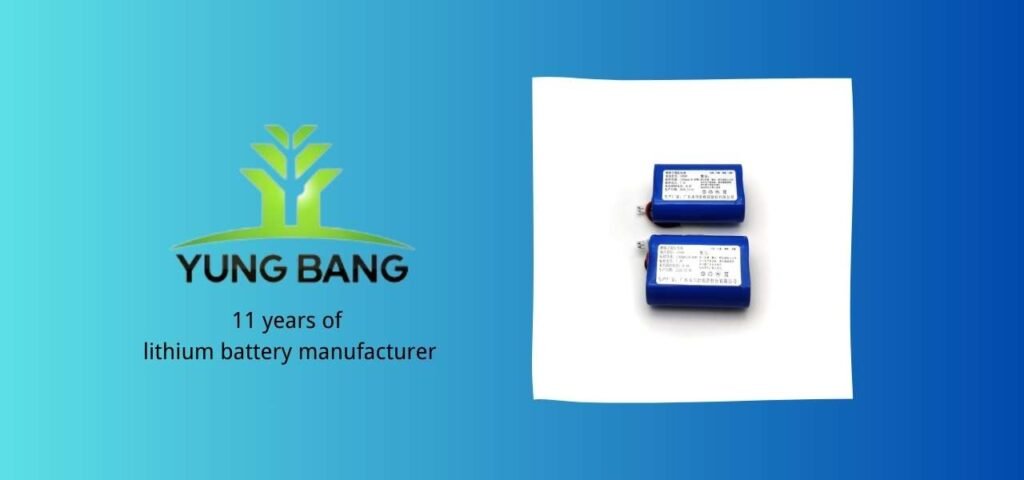
20, What is the history of 7.4V lithium polymer batteries? How have they evolved into their current form?
The history of 7.4V lithium polymer batteries can be traced back to the late 1970s and early 1980s when researchers began exploring the use of polymers as electrolytes in lithium batteries. Over the past few decades, lithium polymer batteries have undergone several key technological breakthroughs and development stages, gradually evolving into their current form:
Early Research: In the late 1970s to early 1980s, researchers began exploring the use of polymers as electrolytes in lithium batteries. Early research focused on developing novel polymer electrolytes to enhance battery safety and stability.
Commercialization Stage: In the early 1990s, lithium polymer batteries began commercial production and gradually applied to fields such as portable electronic devices and medical equipment. With continuous technological advancements, lithium polymer batteries achieved significant improvements in energy density, cycle life, safety, etc.
Technological Improvements: In recent years, with rapid advances in science and technology and increasing application demands, lithium polymer batteries have undergone a series of technological improvements and innovations. These include the application of new materials, optimization of battery structure design, improvements in charge-discharge algorithms, etc., aimed at enhancing battery energy density, cycle life, safety, and fast charging performance.
Application Expansion: Lithium polymer batteries have gradually expanded into new application fields such as electric vehicles, energy storage systems, aerospace, etc. In these areas, the high energy density, long cycle life, and safety of lithium polymer batteries have been widely recognized and applied.
21, Types of 7.4V lithium polymer batteries produced by Yungbang
7.4V 1200mAh 18650 Battery Pack
7.4V 2600mAh Handheld Device Lithium Battery
7.4V 3500mAh 18650 Battery Pack
7.4V 4400mAh Smart Home Lithium Battery
7.4V 5000mAh Lithium Polymer Battery 2S
7.4V 6300mAh Handheld Device Lithium Battery
7.4V 7000mAh High Rate Lithium Battery
7.4V 7500mAh High Rate Lithium Battery
22, Introduction to Yungbang Battery Factory
Rich Experience and Professional Knowledge: Yungbang is a professional enterprise specializing in the research, design, production, and sales of lithium-ion battery cells and battery packs, with years of industry experience and abundant professional knowledge.
High-Quality Product Quality: Yungbang has advanced production equipment and a strict quality control system, with product quality recognized by domestic and international certification authorities. They use high-quality raw materials to ensure products with high performance, high reliability, and long lifespan.
Flexible Customization Services: Yungbang can provide flexible customization services according to customer needs, including battery capacity, voltage, dimensions, casing materials, and more. Customers can choose the most suitable battery pack configuration for their products.
Extensive Application Experience: Yungbang’s products are widely used in various electronic product fields, and they have rich experience and expertise in meeting the demands and technical requirements of different application scenarios, providing customers with professional technical support and solutions.

